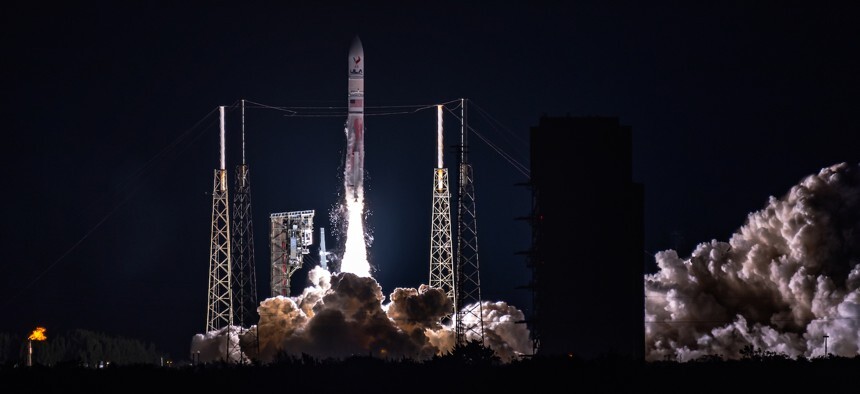19.04.2024
The heavy-lift rocket’s upper stage might extend its service as a tug or defender.

A United Launch Alliance’s Vulcan VC2S rocket launches its first certification mission from Space Launch Complex 41 at Cape Canaveral Space Force Station, Florida, Jan. 8, 2024. U.S. SPACE FORCE / DEANNA MURANO
Faced with competitors building their own reusable heavy-lift rocket, United Launch Alliance is devising plans to keep the upper stage of its Vulcan Centaur rockets in space, where they might tug satellites or counter Chinese threats.
These upper stages could be loaded with more propellant than needed for their initial launch duties, allowing them to stay in orbit and handle other tasks for weeks or months, ULA CEO Tory Bruno told Defense One on the sidelines of the Space Symposium conference.
“I can go off and serve a spacecraft and move spacecraft and get in between Chinese anti-satellite weapons on orbit and things we're trying to protect. I can do all kinds of missions that are with a reusable upper stage,” Bruno said.
Vulcan wasn’t designed to be “reused” in the typical sense—i.e., return to Earth—which will make it difficult for the company to compete on cost with SpaceX once its reusable mega-rocket Starship becomes operational. But ULA’s idea to keep the Centaur upper stage in space could open up new missions for the company.
“It takes a satellite weeks to maneuver in its orbit, and it can only do it a couple of times before it's out of propellant. This is a rocket. It's got two orders of magnitude more thrust, more than that amount of energy, even if it's only half full, it can fly around anywhere in Earth orbit in hours, where it takes satellites weeks to do that, and it can do many orbital changes,” Bruno said.
Bruno envisions “a whole fleet of them up there, building up over time as I'm flying, flying, flying in the air, lasting longer and longer and longer, available to do missions to help us cope with this threat.”

